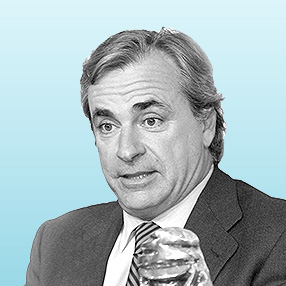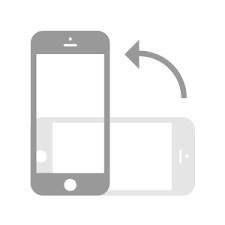
It makes me special pleasure to take part in the Emotional Driving project. Because, besides being friend of the Riberas family, any action in this line is great. And necessary.

I’ve always been especially sensitive to the subject of road safety. This is why I’ve collaborated for years with the Ponle Freno (Put on the Brakes) campaign or the Fundación RACC, making studies and campaigns to raise awareness in society – especially among the younger generation – about the importance of driving safely, more carefully, more aware. Because when you look at the statistical details and see the amount of accidents, the number of deaths and also of serious victims, you realize that accidents in Spain continue to be a serious problem. It’s true a great deal of progress has been made in recent years; from the time the DGT began keeping records, the improvement has been constant, but it’s not enough. Everything done in this area is too little.
This is why I’m particularly thrilled to participate in the Emotional Driving project. Because, in addition to my friendship with the Riberas family, I think any action taken in this direction is fantastic. And necessary. The Grupo Gonvarri/Gestamp, so closely tied to the world of automobiles, demonstrates through this initiative concern for a real problem and in a sector in which the company is a protagonist and thus has a great deal to contribute. In my opinion the initiative is unquestionably a true success. This is why I express my congratulations and thanks for the important effort made to road safety and well-being, which benefits everyone.
Any action in favor of road safety, of prevention, of raising awareness, is welcome. Because this is a nonstop battle. The figures improve, of course, but they are still too high. And I feel particularly aware of this in respect to the younger generation, an age bracket in which the number of accidents shoots up, above all on weekends.
As I’ve said, advances in road safety have been notable in recent years; the safety of cars and roads, as well as the raising of awareness of drivers and society, has improved tremendously. Carmakers have invested a great deal in innovation, from those far off disc brakes to the current ABS and ESP now incorporated in almost all mass-produced cars, or power steering, seatbelts in backseats, tires, airbags…
On the other hand, we mustn’t forget that roads are also a key feature in safety. Perhaps because of my profession, I’m very aware of asphalt types. There is an enormous difference between one type and another. And I don’t refer solely to rainy conditions, when you’re calmly driving on a road that raises practically no spray and then suddenly, without warning, you drive onto another type of asphalt that begins to blanket the car with spray and you lose visibility. Also in dry conditions, there is the question of the type of grip, the aggressiveness of the asphalt, etc. This is fundamental to safety. And so are signs, the layout of the road, visibility… those black spots where accidents repeatedly occur. It is in these areas, for example, that we have carried out intense work through the Ponle Freno platform.
However, as important as those advances in safety are, of equal importance are advances in raising awareness, in sensitizing society, especially among the young. Nowadays, children are the ones who tell their parents, “Dad, on this street the speed limit is 40”, or “Put on your seatbelt”, or “We can’t cross now, Dad, can’t you see it’s red?”. This task of raising the awareness of the younger generation, which has been developed in recent years, is now beginning to bear fruit. The attention to road safety promoted by the DGT, which was a matter that needed tackling, has been the best investment in safety and prevention. Unquestionably, this has been a great step forward. It’s never enough, but education in schools is a good start, an important beginning, of this there is no doubt. And outside the schools, let us not forget the adults.
When I’m asked for advice about road safety or about how to be a good driver, I always give the same answer: use common sense. Because, in the end, when you’re driving and suddenly encounter difficult conditions – rain, snow, lack of visibility, heavy traffic – from that moment onward, signs don’t matter. You are the one who must judge how fast to go, the safety distance between you and others, the degree of concentration, or even whether you should stop at a gas station and wait for the storm or fog to pass.
There are, of course, rules; but even if the speed limit is 120 km/h, perhaps you shouldn’t go faster than 60 km/h. Your own judgment is what should make you decide what to do. And not only because of weather conditions. Sometimes it’s better not to overtake on a two-way road even though it’s permitted on that section simply because visibility isn’t good, or because the distance isn’t enough to overtake safely; or because you have doubts. On these occasions, it’s always best to use common sense. That’s the best advice I can offer.
Because you are risking a lot. Nothing less than your own life. And sometimes the lives of loved ones, or of others, drivers or pedestrians. This is something we should never forget, nor ignore. And it doesn’t matter how experienced we are… or believe we are. The risk is always there. And the concern too.

My case is perhaps different; I have competed for many years and continue to do so today, and what is more, in a race such as the Dakar, which includes certain risks. As a father, I’ve been concerned about my children, about all of them, whether they are on the racetrack (as in the case of Carlos) or when they are traveling by car. The concerns are different, but in each case, they exist. And this, knowing that racing in F1 has its risks. For example, my son Carlos’ accident while training for the Gran Prix of Russia; it was an awful crash, but the consequences weren’t serious. And that was thanks to innovation, to the concern for safety of carmakers and race organizers, to the famous HANS (“Head and Neck Support” which considerably reduces injuries), to the shock tests that the FIA makes before approving a car, to the six point seatbelts, to the carbon fiber helmet… and to the guardrails that to a great extent absorbed the brutal impact. Thanks to these innovations, Carlos’ life was saved; if the same accident had occurred in a single-seater racecar on a racetrack twenty years ago, the results would have been tragic.
This is a clear example of the evolution of safety and its effects, as much in terms of the car as the racetrack and the driver.
But above and beyond competition, the important thing is how we behave on a daily basis, whether driving on roads or in the city. The important thing is how aware we are of the responsibility involved in driving a car. The important thing is how we learn to drive carefully. The important thing is how to reduce the number of accidents, the number of victims. And the key here is driver education. To educate in terms of safety as well as respect.
At the Carlos Sainz Center we offer initiation courses in karting for children. Because we understand that it’s increasingly important, necessary and effective to educate young people: beginning at the age of 7 or 8 and now also even at 4, on an inflatable mini-racetrack; I was thrilled that they could begin playing and also learning at an earlier age. And, above all, learning to respect. Sincerely, I believe respect is the best way to prevent accidents, keeping in mind, above all, that a series of circumstances can lead you to have one.
The mixture of youth, nighttime, alcohol and drugs continues to be a terrible combination. But I believe that young people today are more aware than they were some years ago: the way friends take turns to be the designated driver at night, the alternative of going by taxi, the tests to check alcohol levels and the points of infraction accumulated on one’s driver’s license… are all important advances. And, although the number of accidents involving young people continues to be alarming, young people are increasingly aware that taking precautions such as these are decisions that can save their life.
In this sense, television campaigns are fundamental, both those that raise awareness and those that offer advice. The problem is that they should be reoccurring and constant campaigns, not periodic ones. Because new drivers appear, because the repetition of a message eventually sinks in, because there is always advice you haven’t heard yet or which comes to mind at a specific moment… And not only in the media or at schools, of course. Initiatives such as Emotional Driving, focused primarily on the company’s employees, seem to me absolutely necessary and absolutely exemplary. An example for everyone to follow.


Carlos Sainz
Two-time World Rally Champion, Dakar Champion and Businessman

Por favor, gira tu móvil para navegar